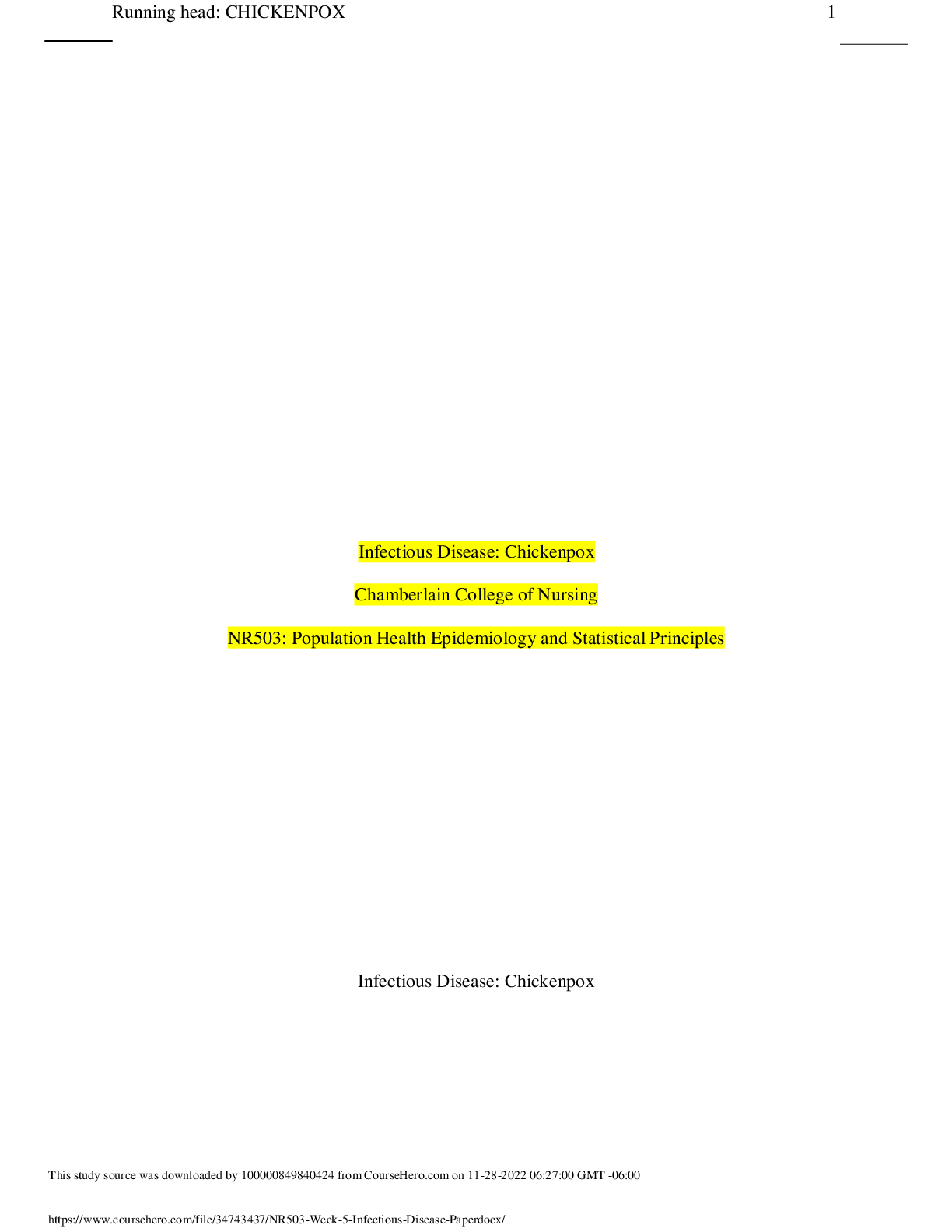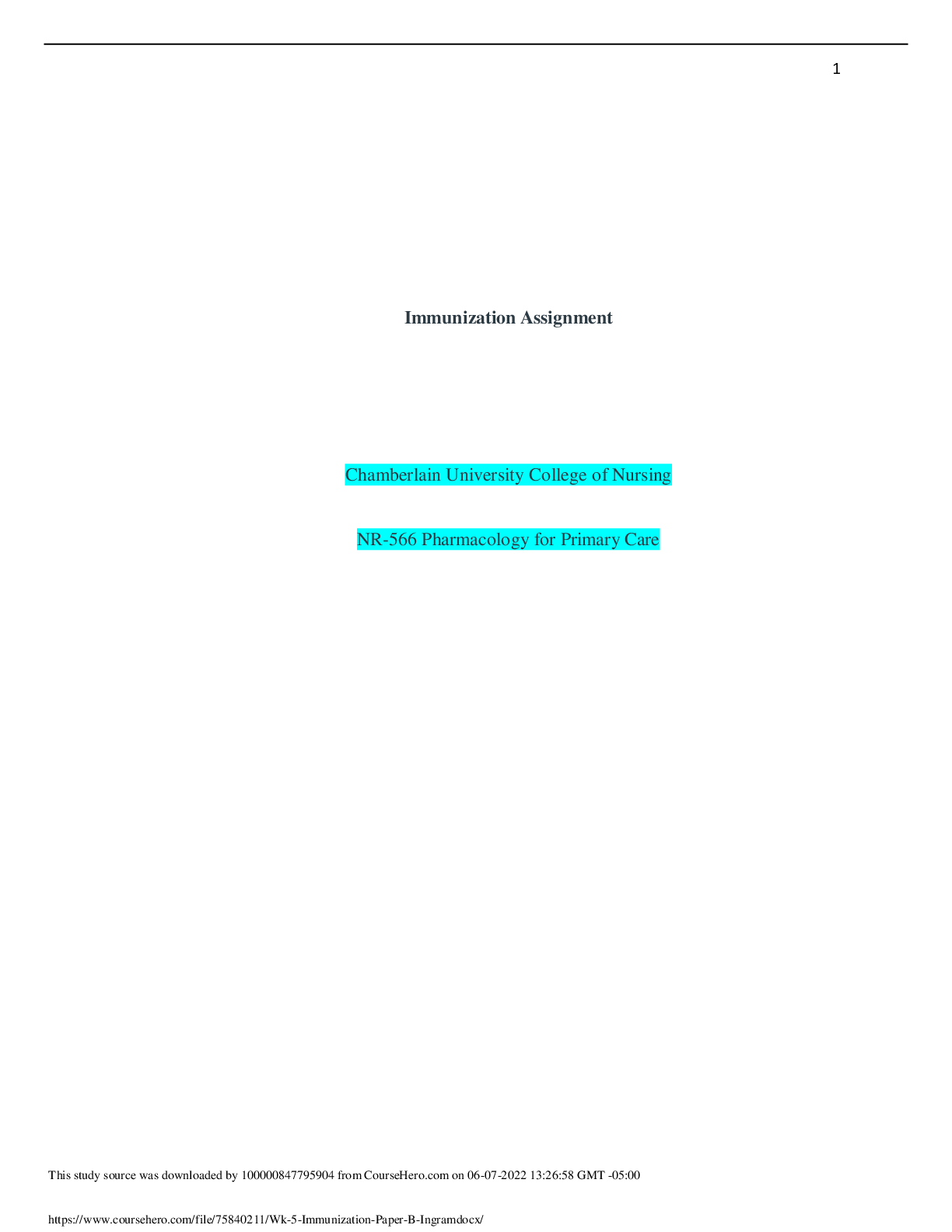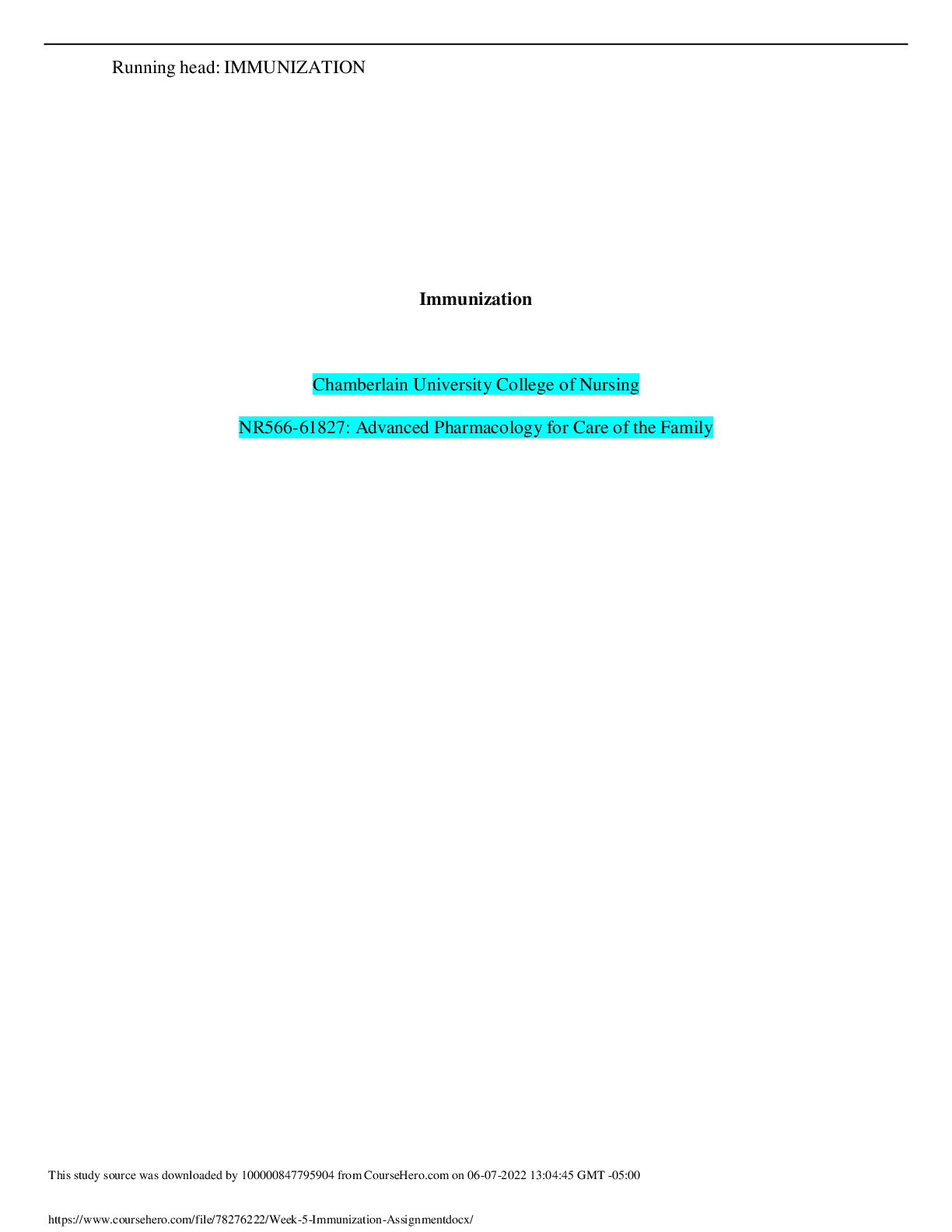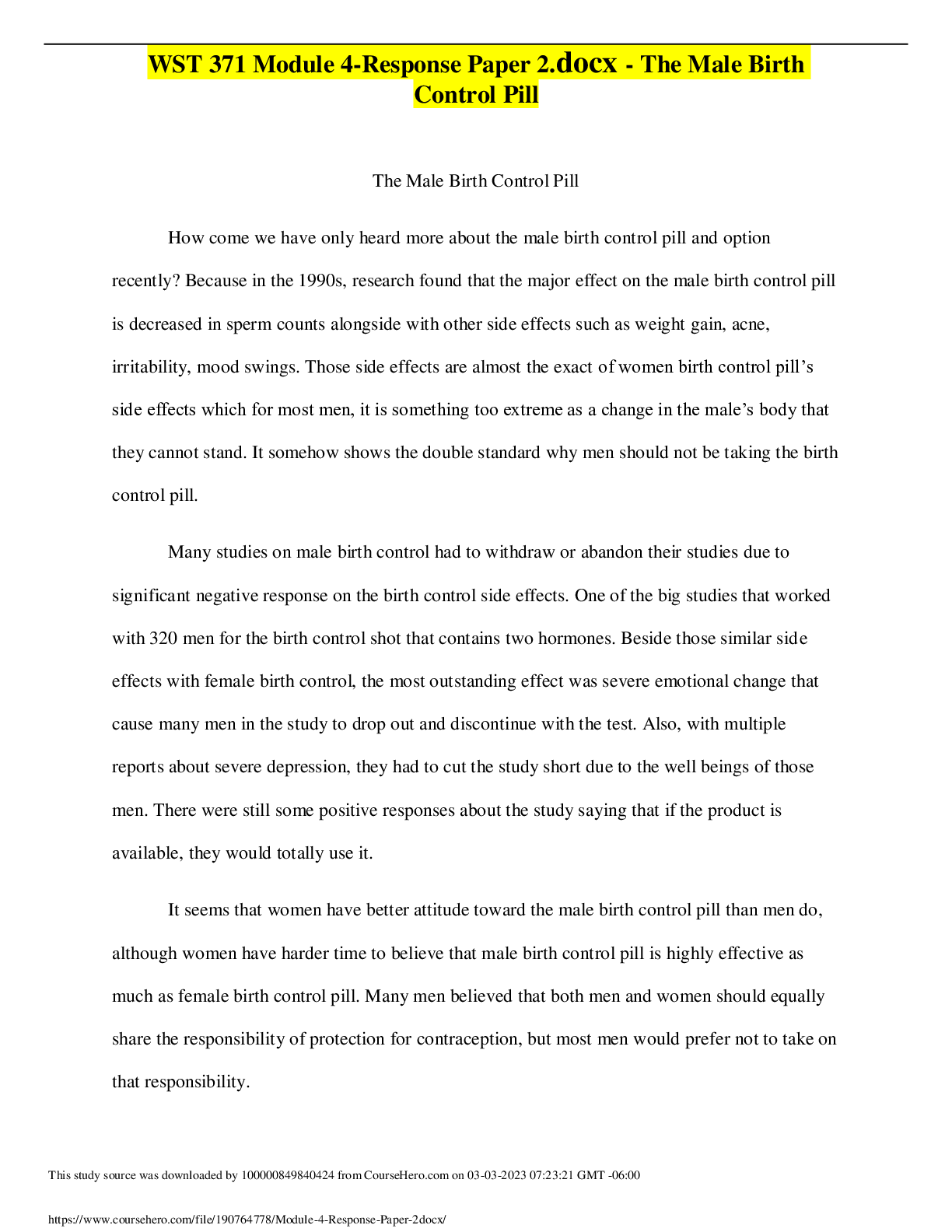BIO 101 Week 4 Individual Organism Physiology Paper (GRADED)
Document Content and Description Below
Organism Physiology Paper Crocodiles BIO 101 Organism Physiology Paper Crocodiles Mother Nature diversity in regards to th... e animal kingdom is amazing. Throughout the Centuries, there have been changes to the globe and therefore to the habitat of the humans, Animals, plants and all of the infinite organisms that live in our planet. However, even though there have been changes, the living organisms also have adapted to their new environment by changing their genetic composition and acquiring new characteristics that allow these organisms to survive and to get well adapted to the prevailing environmental conditions. One of the best adapted living organisms from the prehistoric era to the present history period are believed to be the crocodiles or alligators, who are considered the cousins of the dinosaurs. According to the website About.com, there have been 200 million years of crocodile evolution. Crocodiles are believed to be the offshoot of the archosaurs, which were the “ruling lizards” of the early to middle Triassic period. These species resembled one another in many physiological features, for examples the shape and musculature of their deadly jaws. However, it has been only 65 million years ago that crocodiles developed their well-known traits: stubby legs, sleek bodies, and marine lifestyles. One of the most distinctive features of the modern day crocodiles is their elongated snout. The size of their head is typically one seventh of the total body length, and the shape of the head is intimately associated with the way crocodiles position themselves in the water. They usually have a minimum exposure posture in the water, making it easy for them to prey on other animals and even humans. The “minimum exposure” posture has played an important key throughout 121920044640500their evolution. The internal organs of the crocodiles are just as unique and specialized as the external physiological features. They do not have a diaphragm separating the chest cavity from the viscera, and inhalation is achieved by the backward movement of the liver and other organs. Internal organs like the heart, lungs, intestines, kidneys, etc., have been modified to the suit the crocodilian mode of existence. It is believed that the crocodiles have the most complex vertebrate circulatory system. They have a four-chambered heart and two ventricles, an unusual trait among existent reptiles. Like birds and mammals, crocodiles have heart valves that direct blood flow in a single direction through the heart chambers. They also have unique cog-teeth- like valves that, when interlocked, direct blood to the left aorta and away from the lungs, and then back around the body. This system may allow the animals to remain submerged for a longer period. Their peculiar circulatory system include assistance with thermoregulatory needs and prevention of pulmonary edema. Retaining carbon dioxide within the body permits an increase in the rate of gastric acid secretion and thus the efficiency of digestion, and other gastrointestinal organs such as the pancreas, spleen, small intestine, and liver also function more efficiently. When submerged, a crocodilian's heart rate slows down to one or two beats a minute, and blood flow to the muscles is reduced. When it rises and takes a breath, its heart rate speeds up in seconds, and the muscles receive newly oxygenated blood. The crocodile’s stomach is a bag-like structure, with the inflow and outflow tracts next to each other. The capacity of the stomach is not very great, and so larger prey often cannot be eaten at the one sitting. An unusual feature of crocodiles is the tendency for them to retain hard, indigestible objects, such as stones, in the stomach. These "gastroliths" appear to help digestion, but they may also assist balance in water (hydroliths). The digestive enzymes in the stomach are particularly strong, and most bones and flesh are rapidly digested. On the other hand, hair and other keratinous substances (e.g. turtle shell), and chitin (e.g. insect cuticle), are broken down very slowly. Hair sometimes accumulates as “hairballs” within the stomach, and may later be regurgitated. The bony scales along the back are the "armor", and some species are considered more heavily armored than others. These scales protect, to a large degree, the delicate inner organs from injury during fights with other crocodiles, and tooth marks in them are reasonably common. They also have a good blood supply, and are sites of heat exchange between the animal and its environment. Today's crocodiles and alligators are little changed from their prehistoric ancestors, a telling clue that these reptiles were (and remain) extremely well adapted to their environment. References University of Edinburgh. (2014, October 15). Prehistoric crocodiles' evolution mirrored in living species. ScienceDaily. Retrieved October 22, 2014 from www.sciencedaily.com/releases/2014/10/141015101725.htmStrauss, B. (n.d.). Here's Why Crocodiles Haven't Changed Much in 200 Million Years. Retrieved October 22, 2014, from http://dinosaurs.about.com/od/typesofdinosaurs/a/crocodilians.htmVertebrates. (n.d.). Retrieved October 22, 2014, from http://greenhillapbiology2009rotating.wikispaces.com/26. Vertebrates [Show More]
Last updated: 2 years ago
Preview 1 out of 5 pages
.png)
Buy this document to get the full access instantly
Instant Download Access after purchase
Buy NowInstant download
We Accept:

Reviews( 0 )
$12.00
Can't find what you want? Try our AI powered Search
Document information
Connected school, study & course
About the document
Uploaded On
Mar 02, 2022
Number of pages
5
Written in
Additional information
This document has been written for:
Uploaded
Mar 02, 2022
Downloads
0
Views
122















